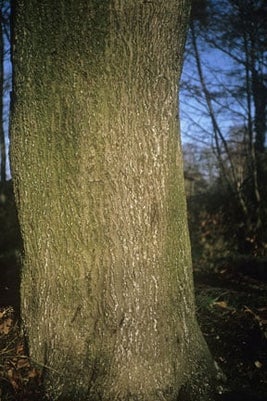
Quick facts
Common name - Beech scale
Scientific name - Cryptococcus fagisuga
Plants affected - Beech trees (Fagus sylvatica)
Main symptoms - Dirty waxy powder on trunk and larger branches
Caused by - Sap sucking scale insects
Timing - Summer
What is beech scale?
Beech scale, also known as felted beech coccus, is a scale insect that feeds on the of beech ( Fagus sylvatica ) trees. It is found in colonies in crevices of the of the trunk and larger branches.
Scale insects are sap sucking true bugs belonging to several families in the Hemiptera. Typically the adults are immobile having a flattened or raised appearance, with no visible legs. They often look like a ‘scale’ on a leaf or stem, many species produce a white wax often covering egg masses. There are more than 100 species found in Britain, 26 of which have been introduced. More than 25 species can be found in gardens or on houseplants.
Symptoms
Individual scales are about 1 mm long but populations are usually detected by the grey-white waxy powder that colonies produce.
There is no honeydew produced and little direct damage is caused but affected trees may become more susceptible to beech disease, a combination of the scale and a canker fungus (Nectria coccinea) ().
Management
As this insect usually causes little direct damage to trees management is not necessary and it can be treated as part of the insect life that beech trees can support.
Biology
Beech scale is a parthenogenetic (reproducing without the need for males) scale insect with one generation year.
During the summer each female lays clusters of up to eight eggs under the protective white waxy wool like substance. The eggs hatch by late summer and the nymphs settle to feed in crevices. They overwinter as nymphs becoming adults in early spring.















